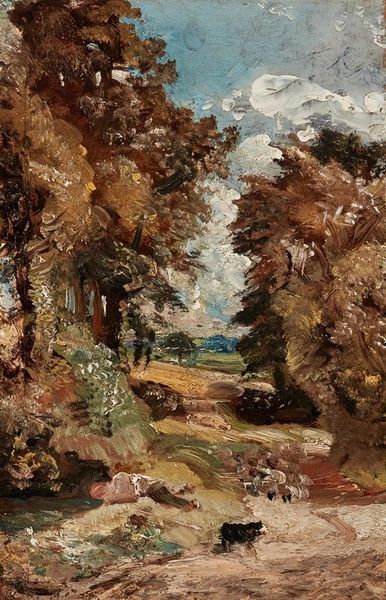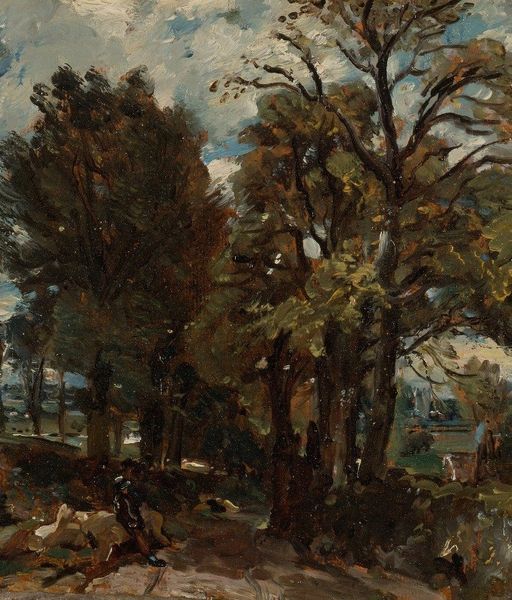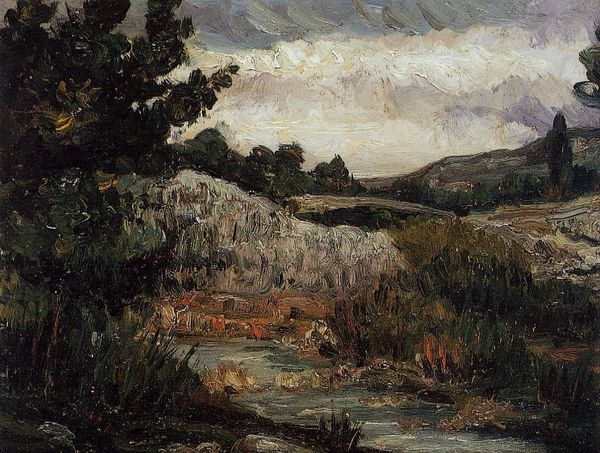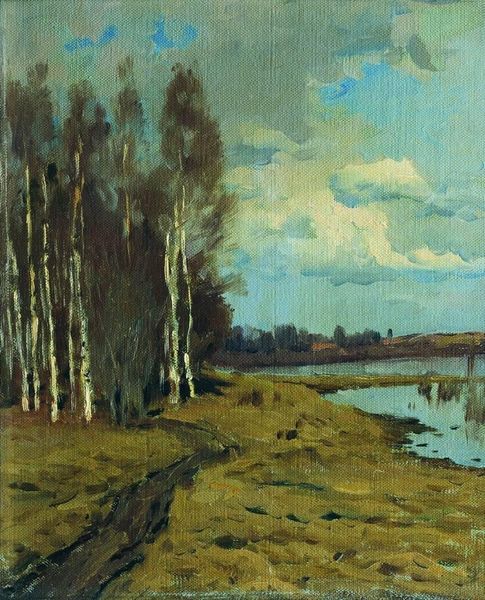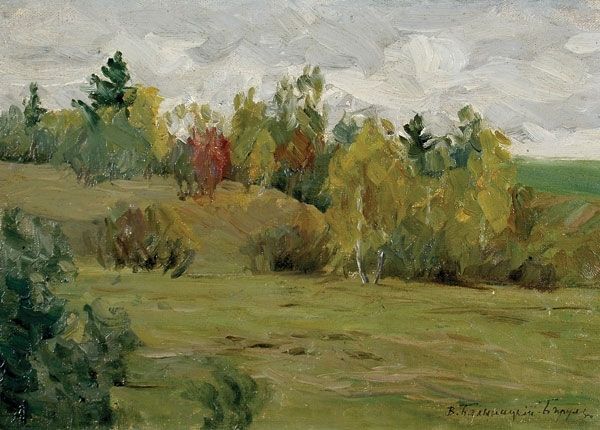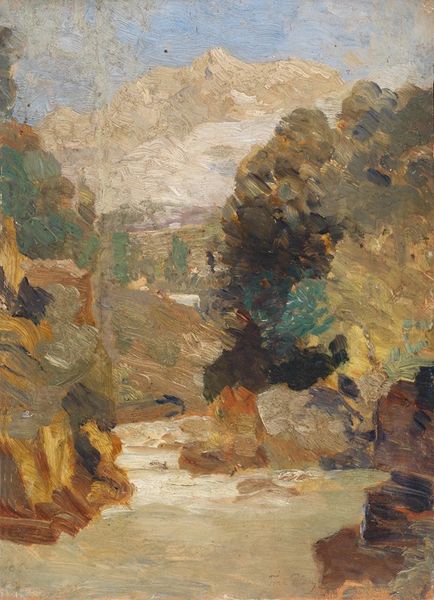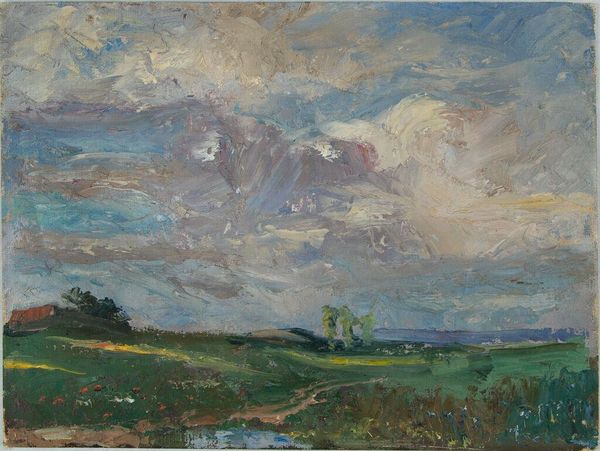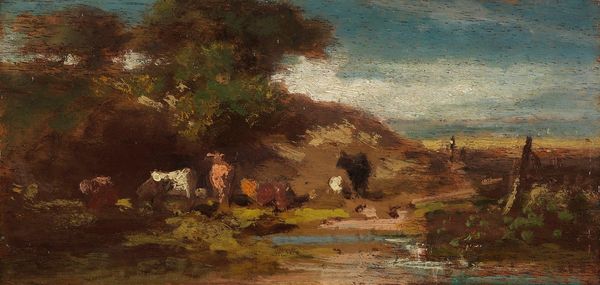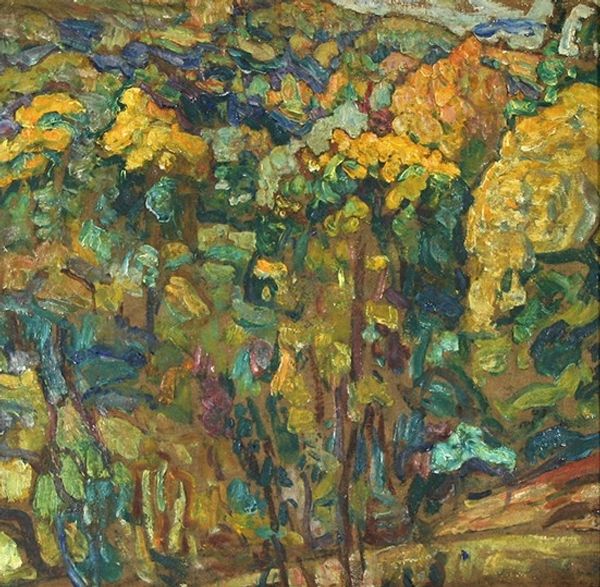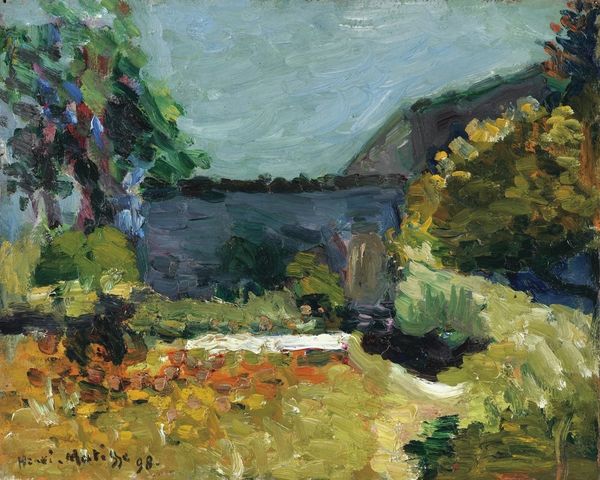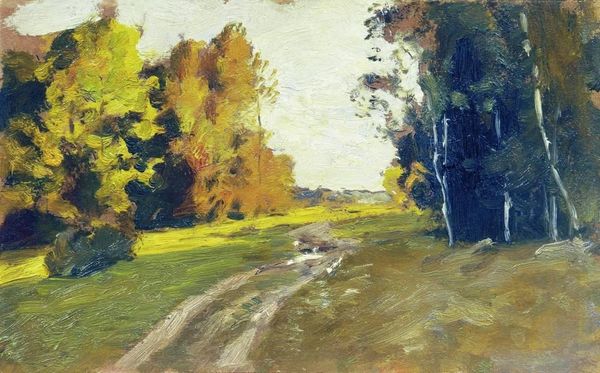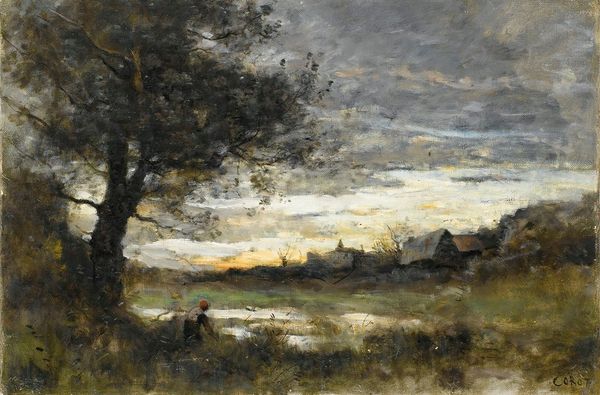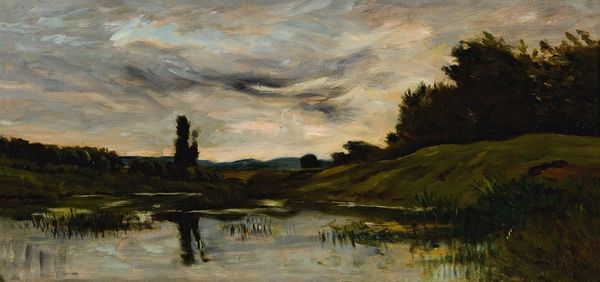
Copyright: Public Domain: Artvee
Curator: Let’s turn our attention to this oil painting titled "Paysage" created by Paul Cézanne in 1866. What strikes you most when you look at it? Editor: Immediately, I notice the thick impasto of the oil paint. It's applied with such physicality that it looks almost sculptural. You can really see the labor, the material asserting itself on the canvas. It’s less about replicating nature, and more about the act of construction. Curator: It's funny you say that. Sometimes I see this particular work as a struggle for something solid. Cézanne yearns for something permanent but can only grasp fleeting impressions, layering brushstrokes to create the sense of enduring presence like how we can carry someone's voice long after they have left the room. Editor: Well, let's think about the oil paint. By the 1860s, industrially produced oil paints in tubes were becoming much more widely available and at a reduced price. How do you think these changes in access influenced Cézanne’s technique? I think there is something inherently interesting when art becomes affordable because of how available these supplies had become. Curator: Fascinating point! I believe he used those fresh pigments and available materials as an opportunity to explore new modes of seeing. I get this sense of deep personal connection to the landscape, how the ochres and dark greens create a visual rhythm. Like echoes of things he heard or memories that washed over him. Editor: I agree about the ochres and greens; but it’s a very controlled landscape in a way, even with that apparent roughness in the paint application. Nothing here is wasted—labor, materials—everything has a function in representing space in pictorial terms. It’s less about emotion or spirituality than it is about how these materials perform. Curator: Hmm, perhaps, but it feels more profound than just that for me. Ultimately, the artwork provides solace; Cézanne's personal way of perceiving nature transmuted into oil, and his ability to let the ordinary turn luminous, if only for a second. Editor: Yes, it all contributes to this incredible legacy. It just feels significant to remember that these "luminous" strokes were also reliant on industrial and market changes taking place around him. That his individual artistry also speaks to wider cultural and economic shifts.
Comments
No comments
Be the first to comment and join the conversation on the ultimate creative platform.
